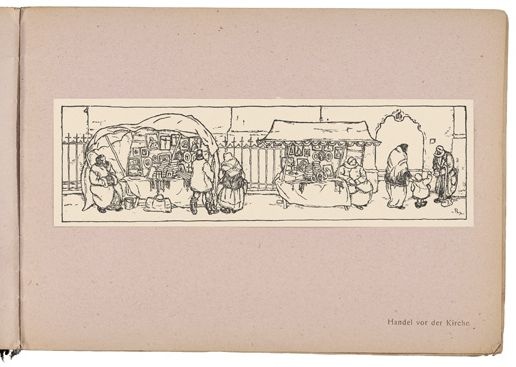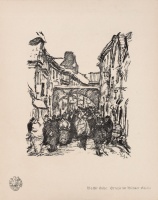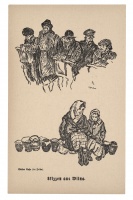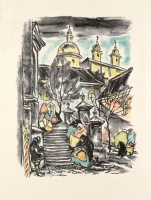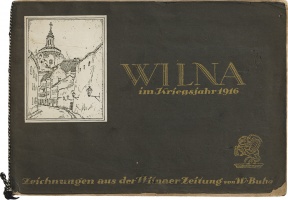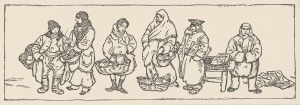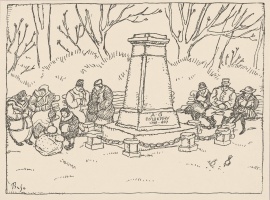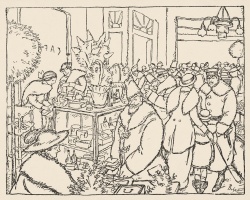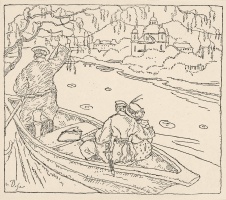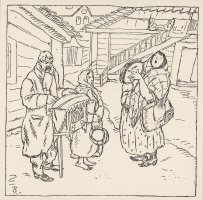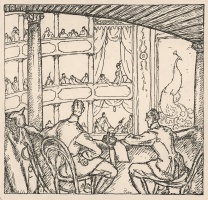



Trading by the churc
| Author: |
Walter Buhe (1882–1958) |
| Created: | 1916 |
| Material: | paper |
| Technique: | |
| Dimensions: | 8.60 × 28.70 cm |
| Signature: | on the zincograph, bottom right: Buhe inscription on the page, bottom right: Handel vor der Kirche. |
‘Vilnius in the Year of War 1916’.
Images of German soldiers prevail in the second part of Buhe’s book: a military band plays in Lukiškių Square in the afternoon, a performance takes place in the German Theatre (converted from the city theatre) on Pohulanka, coachmen with horse-drawn sledges wait for fares by the railway station, soldiers take out boats on the River Neris with their girlfriends, or they frequent Sztrall’s Coffee House. This is the entertainment and the way of life for German soldiers in an occupied foreign city.
Text author Laima Laučkaitė
In the zincograph, the eye is attracted by the goods spread out on street stalls. But for the artist, the buyers and sellers, women huddling in fur coats and huge overcoats, and wrapped up in scarves, were more interesting than the goods themselves, which were mostly Catholic devotionals. The artist must have considered the shabby beggar standing by the church door to be East European exotica, for beggars like that appeared on the streets of Germany only after the war. The rusticated doorway is undoubtedly Baroque, and resembles the side entrance to the Dominican or St Theresa’s church.
Text author Giedrė Jankevičiūtė
Source: Law firm Valiunas Ellex art album VILNIUS. TOPOPHILIA II (2015). Compiler and author Laima Laučkaitė, OBJECTS ON SHOW (2017). Compiler and author Giedrė JankevičiūtėExpositions: ‘Vilnius Forever. A Dialogue of Artworks and Guides to the City’, 25 May 2022 – 30 April 2023 Lithuanian Art Centre TARTLE (Užupio St. 40, Vilnius). Curator Laima Laučkaitė.






